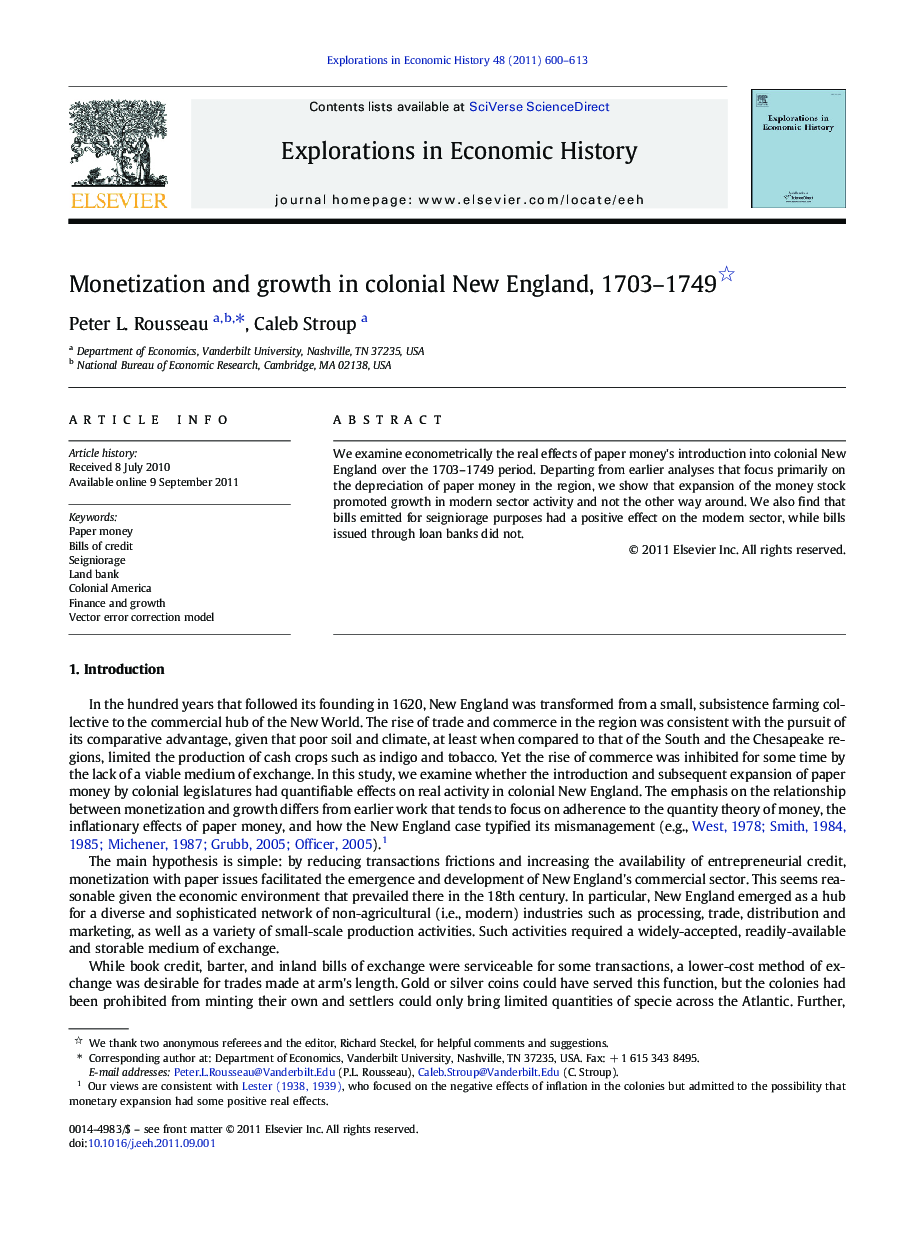| Article ID | Journal | Published Year | Pages | File Type |
|---|---|---|---|---|
| 5068830 | Explorations in Economic History | 2011 | 14 Pages |
We examine econometrically the real effects of paper money's introduction into colonial New England over the 1703-1749 period. Departing from earlier analyses that focus primarily on the depreciation of paper money in the region, we show that expansion of the money stock promoted growth in modern sector activity and not the other way around. We also find that bills emitted for seigniorage purposes had a positive effect on the modern sector, while bills issued through loan banks did not.
⺠We estimate the real effects of paper money in colonial New England from 1703 to 49. ⺠VAR models show that money promoted modern sector growth and not the other way around. ⺠Bills emitted for seigniorage purposes had positive effects on growth but loan bank bills did not.
